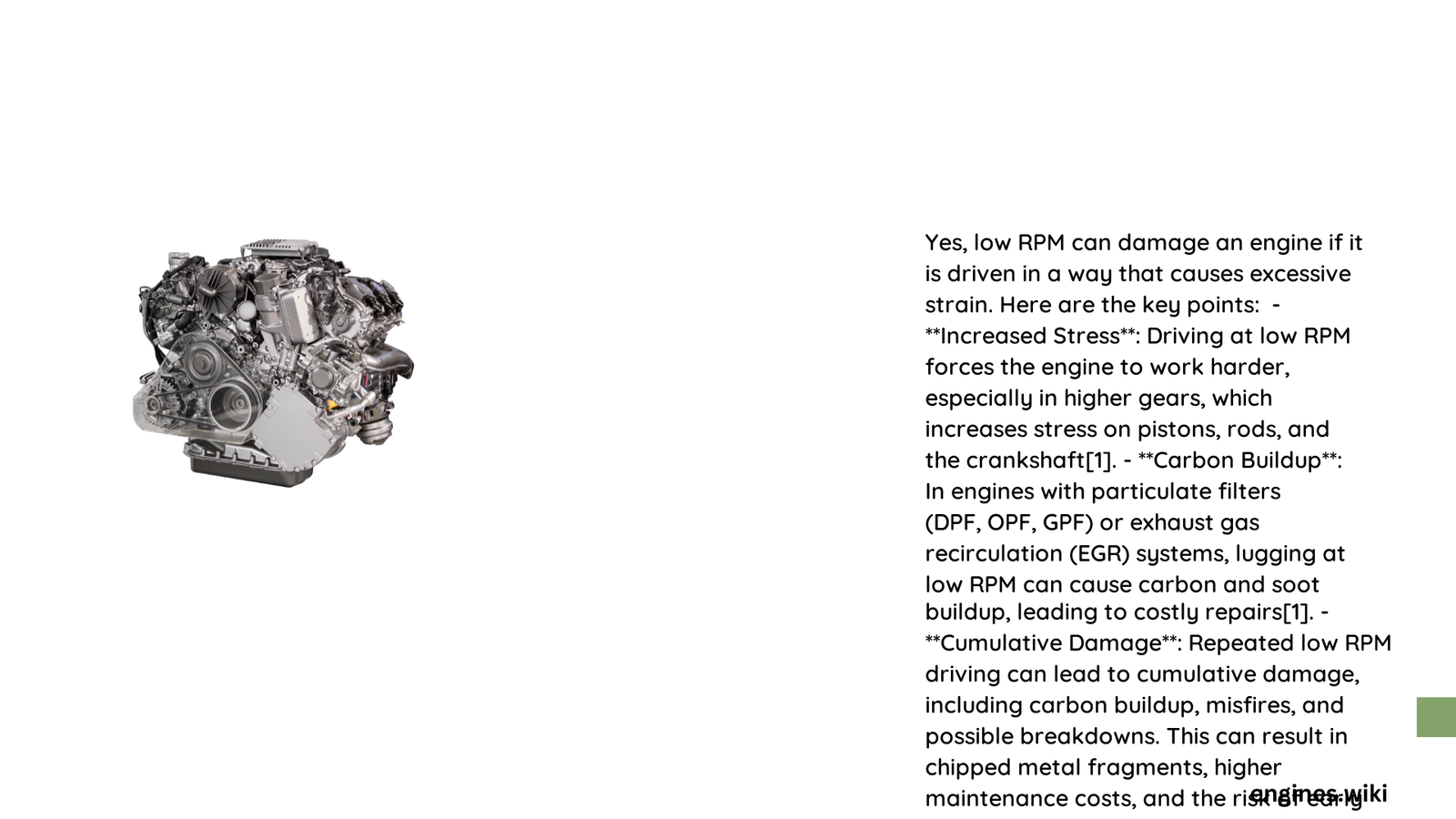Can Low RPM Damage Engine: Understanding the Risks and Consequences
Low RPM driving can silently compromise your engine’s health, creating microscopic damages that accumulate over time. Consistently operating an engine below its optimal performance range introduces significant mechanical stress, potentially leading to premature wear, reduced efficiency, and substantial long-term repair costs.
What Happens When You Drive at Low RPM?
Driving at consistently low RPM creates multiple mechanical challenges for your vehicle’s engine:
- Mechanical Stress Factors
- Increased component strain
- Reduced lubrication effectiveness
- Incomplete combustion cycles
-
Higher risk of carbon deposits
-
Performance Impact
- Reduced power output
- Inefficient fuel consumption
- Potential long-term engine damage
How Do Low RPMs Affect Engine Components?
| Component | Low RPM Impact | Potential Damage |
|---|---|---|
| Pistons | Increased friction | Accelerated wear |
| Crankshaft | Uneven load distribution | Potential structural stress |
| Bearings | Reduced lubrication film | Premature failure |
Why Does Low RPM Cause Engine Stress?
Low RPM operation forces engines to work harder while delivering less efficient power. This creates a cascade of mechanical challenges:
- Combustion Inefficiency: Incomplete fuel burn leads to carbon buildup
- Reduced Oil Circulation: Lower pump speeds minimize lubrication
- Increased Mechanical Friction: Components experience higher stress levels
Can Modern Engines Handle Low RPM Driving?
While contemporary engines feature advanced technologies like variable valve timing and sophisticated engine management systems, they still require proper operational parameters:
- Recommended RPM Range: Most engines perform optimally between 2,000-3,500 RPM
- Gear Selection: Crucial for maintaining appropriate engine speed
- Driving Conditions: Highway vs. city driving impact RPM management
Practical Prevention Strategies
- Shift Gears Appropriately
- Avoid prolonged low-speed, high-gear driving
-
Use transmission to maintain optimal engine speed
-
Regular Maintenance
- Frequent oil changes
- Use high-quality lubricants
- Monitor engine performance indicators
Expert Recommendations
Automotive engineers consistently advise:
– Understand your specific vehicle’s performance characteristics
– Avoid sustained low RPM driving
– Listen to your engine’s performance signals
– Perform regular diagnostic checks
Technical Insights
Professional mechanics emphasize that while occasional low RPM driving won’t immediately destroy an engine, consistent practice can:
– Accelerate component wear
– Reduce overall engine efficiency
– Increase long-term maintenance costs
Conclusion
Understanding and respecting your engine’s operational parameters is crucial for maintaining vehicle longevity and performance. Low RPM driving isn’t inherently destructive but requires careful management and awareness.

